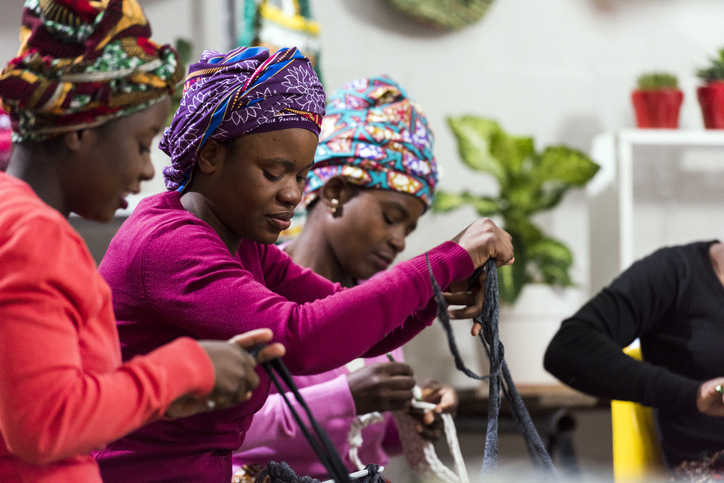Terrorist attacks have a big negative impact on education, particularly if they occur on the way from children’s homes to the nearest primary school. This column reports evidence from Kenya showing that media coverage of terrorism magnifies these effects, findings that caution against sensationalism in reporting such events. Providing children with fast, reliable, and secure transport to school may also mitigate some of terrorism’s negative effects and help to boost enrolment in the face of attacks.
The observed probabilities of dying in a terrorist attack are comparable to those of being killed by lightning. Yet among respondents to the World Values Survey in Europe and North America, 58% say that they are ‘worried’ about terrorist attacks. In Africa, this share is 74%, which is on a par with concerns about job loss or war. Such strong emotional reactions to relatively low frequency events are the result of deliberate tactics: terrorists aim to spread fear and disruption beyond the violent act itself.
Because of the intimidation strategies adopted by terrorists, the mere possibility of attacks happening might reduce schooling even without destroying infrastructure or killing civilians. While many studies have shown that various types of violence can suppress school enrolment or even attainment in many different settings (including Brazil, West Africa, East Africa, East Asia, and India), relatively little is known about the role of parents’ demand for education for their children in explaining this effect.
Exposure to mass media can be a powerful influence on a variety of socio-economic outcomes. Among these, radio or television can affect the educational outcomes of children either directly or, alternatively, by changing the role of women in the household, as seen in India and Cambodia.
Aside from any direct effect on education, media coverage can also propagate the negative impact of terrorist attacks on education by fuelling fears and stoking sentiments. As a report by the United Nations Educational, Scientific and Cultural Organization (UNESCO) puts it: ‘Accusations of being the megaphone of terrorism to attract audiences weigh constantly on media, who are often operating on over-drive’.
Kenya is an ideal setting in which to study the relationships between terrorist attacks, media coverage, and education. The country is characterized by relatively patchy radio signal coverage, the main access to mass media. Moreover, parts of the country have experienced a stark increase in terrorist activity since the late 2000s, mainly in the northeastern parts of the country. Figure 1 shows the location and timing of these attacks.
Figure 1: Terrorist attacks in Kenya


Casualties of terrorist attacks Terrorist attacks over time
The detrimental effect of terrorism on schooling is magnified by access to mass media. As Figure 2 shows, school enrolment decreases in the most affected parts of the country once terrorist attacks start.
More surprisingly, perhaps, the decrease in enrolment is much stronger for those children whose parents have radio signal coverage and thus access to radio. The difference is around 5 percentage points, a sizeable divergence, which suggests that the effect of terrorist attacks on schooling is indeed driven by parental demand, and that both awareness of terrorism and the subjective risks associated with it may play a role.
Figure 2: Terrorist attacks, schooling and radio-signal coverage

The number of media items on terrorism alone is negatively associated with school enrolment independently of actual attacks carried out. Terrorism in Kenya has attracted considerable media attention, as Figure 3 shows.
Relating the number of media items covering terrorism to enrolment in a specific region in Kenya shows that every 100 media mentions are associated with a decrease in attendance by 0.5 percentage points. Estimates suggest that every 100 media mentions have the same effect as one actual attack carried out. Unsurprisingly, these effects only hold for households with radio signal coverage. For households that do not have access to radio, there is no relationship between media coverage of terrorism and schooling.
Figure 3: Media coverage of terrorist attacks in Kenya

These findings highlight the importance of the salience of terrorism in the media as a channel that magnifies the already sizeable negative impact of terrorism on education. For the specific case of education choices, this is a channel that may well have lasting effects on socio-economic outcomes as well as demographic development.
Analysis of the exact location of attacks, children’s homes, and schools shows that attacks in close proximity to family residences have a particularly strong negative effect on education. But attacks have the most detrimental effect on schooling if they occur on the way to the nearest primary school.
Taken together, these results suggest that minimizing the negative effect of attacks on schooling requires a multifaceted approach.
On the one hand, the results on the significance of media coverage should be seen as a caution against sensationalism and in favor of moderate and facts-oriented reporting of terrorist events. UNESCO’s report makes useful suggestions for how journalists might report on terrorism.
On the other hand, the importance of the location of attacks suggests that providing children with fast, reliable, and secure transport to school may mitigate some of terrorism’s negative effects and help to boost enrolment in the face of terrorist attacks.







